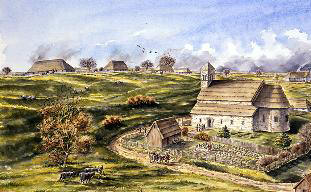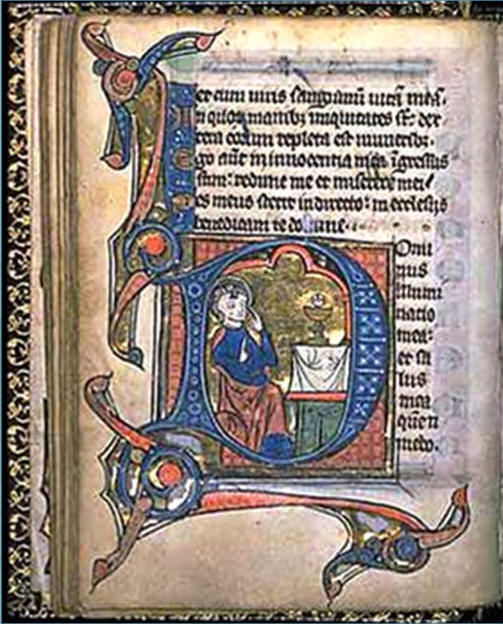| |
The Position and Role of the Catholic
Church |
| |
 |
During the Middle Ages, the Christian Church
was a powerful and influential force across Europe.
The head of the Catholic Church was the Pope, who lived in Rome
in Italy. Compared to today, the people in the Middle Ages were
far more religious, and the church teachings, festivals and
rituals influenced their everyday lives. The Catholic Church
also ran Monasteries and Convents, wherein men and women could
live a peaceful life of religion and prayer. Priests, Monks and
Nuns, also looked after the sick and poor, and provided the
education and spiritual needs of the local people.
Click the Picture of the Cathedral on the left
to hear the sounds of a Latin Mass.
|
|
| |
|
The Priests and Monks preached that
as Adam and Eve had betrayed God’s trust in the Garden
of Eden all people were born sinners. The common people
were told that they should resist the temptations of the
Devil, be obedient to their superiors and spend their
life in prayer. Also that they should confess their
sins, repent and accept their penance(the punishment
given to them by their Priest that they were to carry
out themselves.) The people were at times given the view
that their life on Earth was not
|
important; That if they
accepted their suffering and worked hard to lead a holy life, they
would die free of sin and then they could enjoy an
eternal life with the Angels in Heaven. The people were
often reminded of this by their Priest from his pulpit
during the Sunday Church sermons. Any man, woman or
child, they were told, that gave into temptation
and sin would suffer an endless existence of fire, fear,
torment and pain, inflicted on them by the Devil and his
evil demons in Hell for all eternity.
|
|
Rulers and Kings were careful to keep the support of the Catholic
Church. Important officials in the Church, conducted their
coronation ceremony where they were made King, later they performed
their marriage ceremony, and baptised and educated their
children.
If any man or ruler went against the wishes or teachings of the Catholic
Church, the Pope could excommunicate him. This meant that he
could not go to heaven when he died, but would have to suffer
the eternal fires and damnation of Hell. |

The Medieval view of Hell. |
|
| |
Source F
 |

|
| |
| |
 |
| |
Optional Extension Questions |
| |
Source G
 |
| 3.b) |
Read at the following web site, about
the historical context or background of the scene shown in
Source A - About the coronation of King Charlemagne, over two
hundred years before William the Conqueror became King of
England.
According to this account, why did the Pope suddenly, quickly
crown Charlemagne, when Charlemagne was not expecting it, and
had not even asked for the new title?
http://medievaleurope.mrdonn.org/holyromanemperor.html
|
| c) |
Study the painting in Source G on the left.
How does the scene shown in this painting, contradict the
account of events as described in the above website? |
| d) |
Source F shows a scene of some Medieval
Monks, copying out by hand the beautifully illustrated books
produced in the monasteries during this period. |
|
| |
Why were these beautiful
manuscripts reproduced by hand? Find out who invented the printed press
and when. Print off a small picture of an early printing press, and
paste this in your book. |





